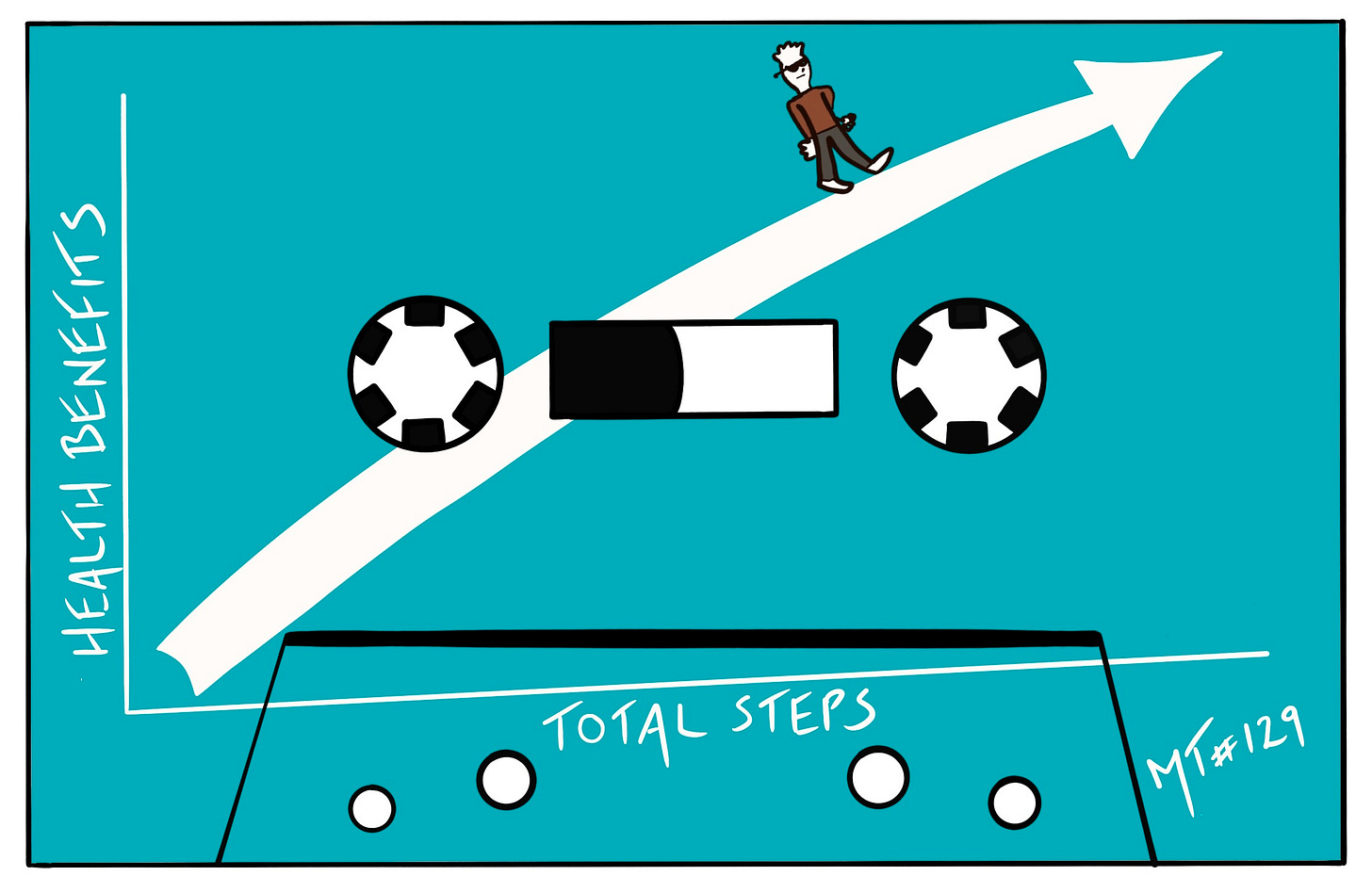Matt’s Mix Tape, Vol. 129
Hi, I’m Matt Tillotson, and this is Matt’s Mix Tape: essays + links on living a healthy and creative middle life.
This week’s Mix:
The never-ending incremental benefits of walking
Destroying analysis paralysis
Being even slightly overweight drives worse health outcomes
Florida photo: sky rockets in flight
The never-ending incremental benefits of walking
A few weeks ago, I shared a study that said walking 7,000 steps a day is as beneficial as 10,000.
That’s the thing about studies. There’s always another one.
This is a remarkable chart.
Seven studies were included in the meta-analysis, accounting for 28,141 total participants, 175,370 person-years, and 2,310 deaths.
What’s striking: there are few diminishing returns.
There is nearly as much incremental benefit going from 12,500 steps to 15,000 as from, say, 5,000 to 7,500.
To put this level of benefit in perspective:
… smoking seems to be associated with ~70-80% higher rates of all-cause mortality. Relative to people who walk 16,000 steps per day, walking just 2,700 steps per day is associated with ~200% higher rates of all-cause mortality.
Incredible.
15,000 steps seems like a big goal, but a beneficial one. So I asked Twitter how to get it done.
For most who responded, getting to 15,000 requires a divide-and-conquer strategy:

There’s also the “nook-and-cranny approach:” squeeze extra steps into your everyday routine:
I’ve done well getting to 10,000 steps over the past year. But 15,000 has been elusive.
In my highest step-count months, I walk five miles (10K-ish steps) at one time and then usually took a short evening stroll.
And, to my passengers’ dismay, I’ve always been a first available parking spot guy. Driving around to find a “better” spot drives me nuts.
So now when I park 450 yards from the Publix entrance, my response to annoyed passengers will be:
“I’m reducing our risk of death.”
And I’ll be right!
Destroying analysis paralysis
Do you often wait for “more” information to make a decision?
The problem is “more” often fails to become “enough.”
How do we find the balance?
The late Colin Powell had a solution: the 40-70 rule:
Colin Powell, the former Secretary of State, is famous for his 40-70 rule. He said that a leader should make a decision when he has between 40% and 70% of the information available. If they make the decision with less than 40% of the information, they are shooting from the hip. But waiting for more than 70% of the information delays the decision unnecessarily.
The 40-70 rule is good way to aim and then get to firing.
Hat tip: Nat Eliason
Being even slightly overweight drives worse health outcomes


“Healthy at any size” is not true. I know it’s not easy. But take care of yourself.
This week’s Florida photo: Sky rockets in flight
Being in Florida, I can stand in my backyard watching things hurl themselves into space.
The once-quiet launchpad at Cape Canaveral is bustling. Next Spaceflight is the app I use to track the blast-off busyness.
Even from the west side of Florida you can see the launches easily:
This was a booster separation. I think:
Watching these launches never gets old.
Hello to 41 new subscribers
Dangerously close to 1,000. 👀
And thank you for reading. Reach out anytime!











